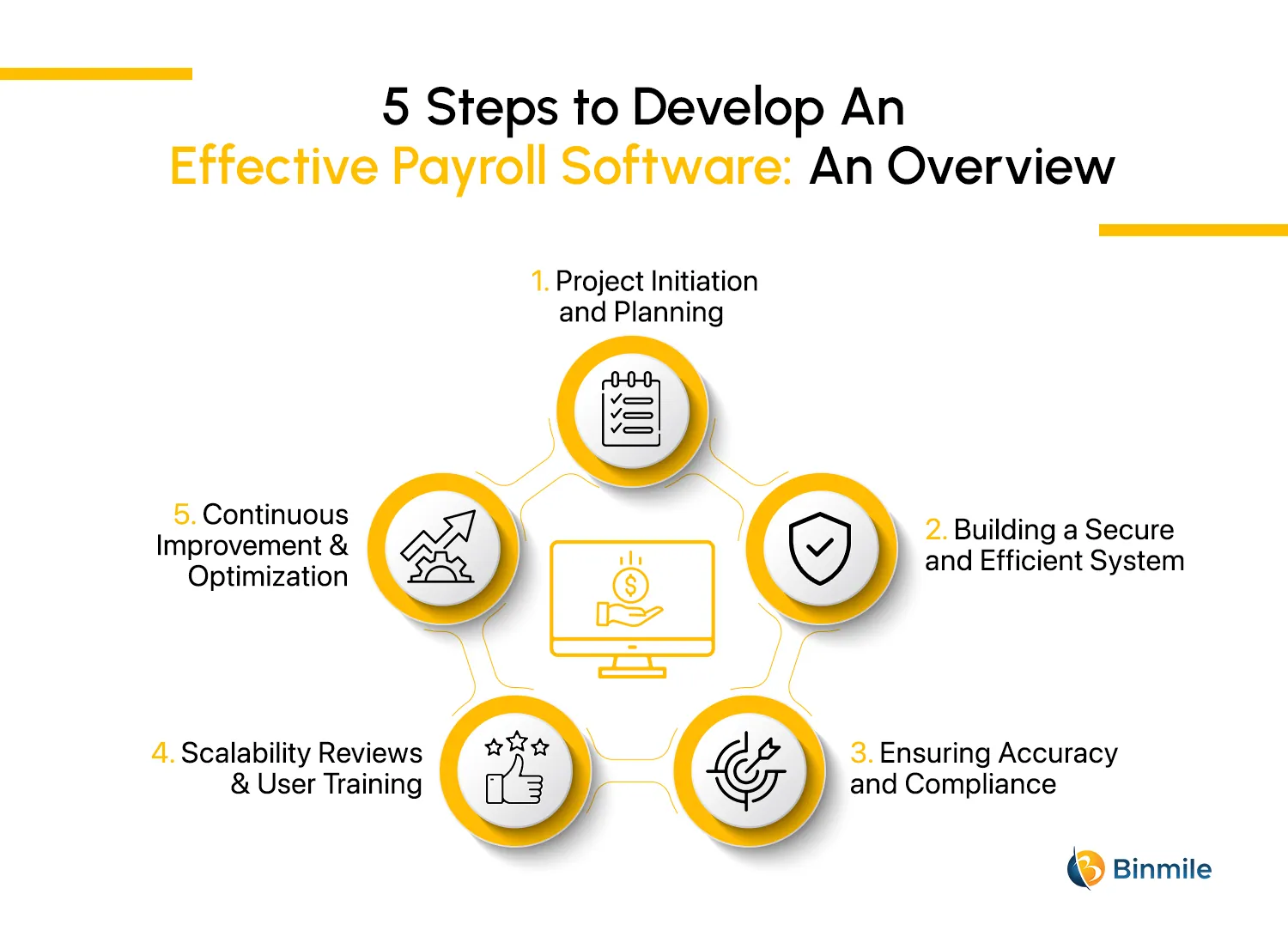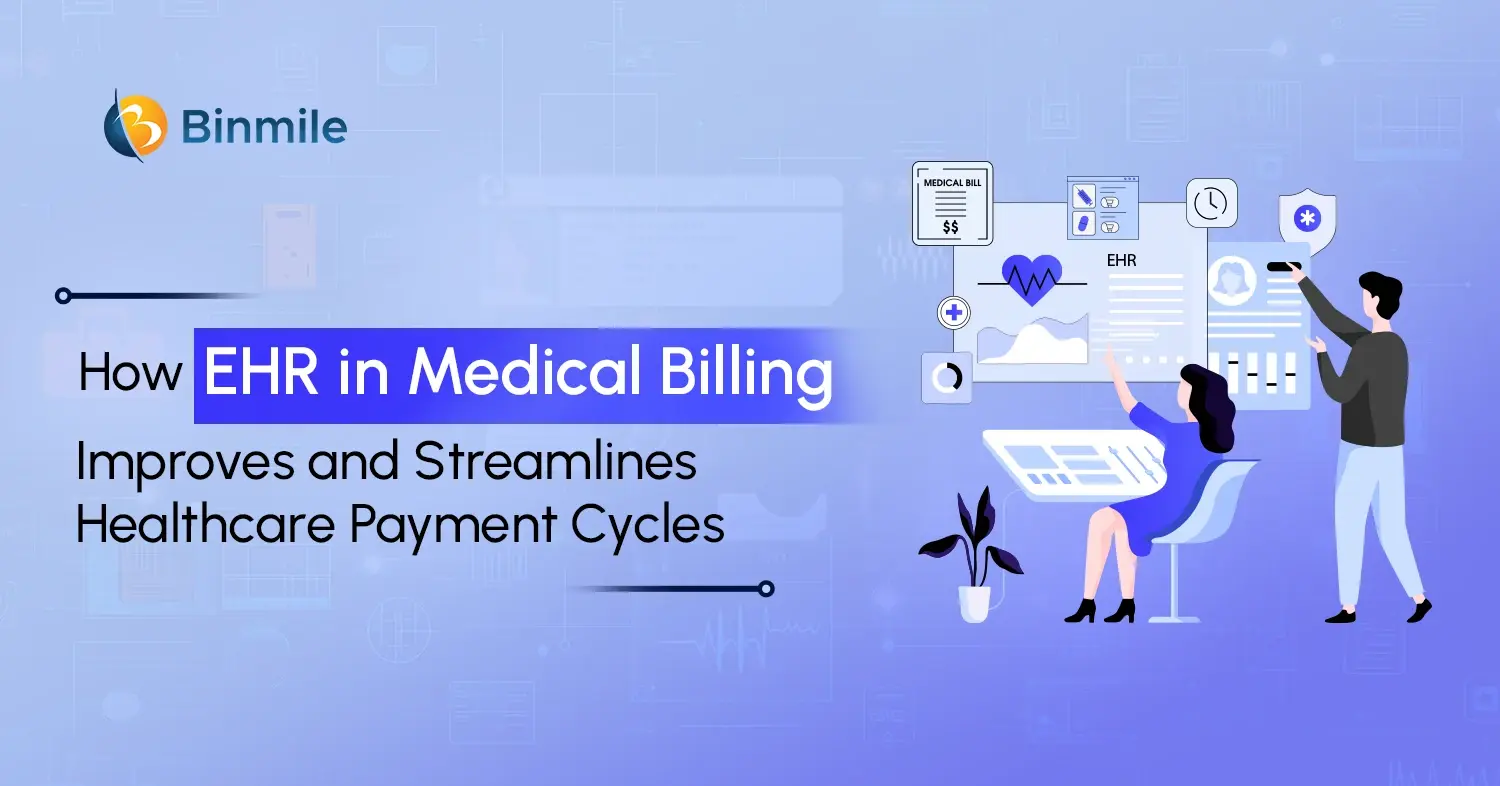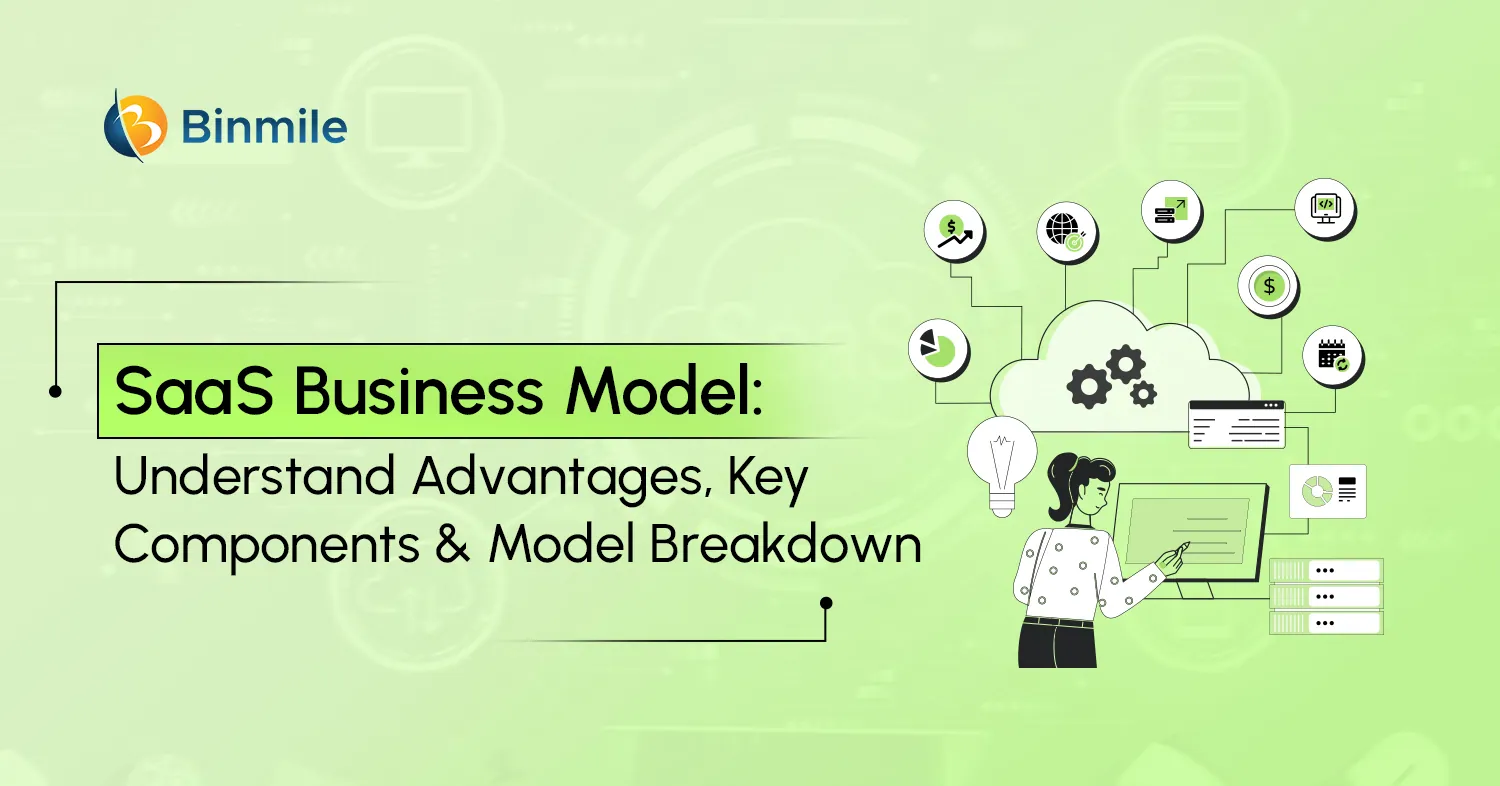- cost to develop payroll software
- Features of Payroll Software
- how to develop payroll software
- hrms software development solutions
- Payroll HRMS software
- payroll management system
- payroll software development cost
- payroll software development process
- Payroll Software Development Solution
- payroll software for a small business
- Payroll software services development
- successful payroll software development
Payroll software is more than just calculating salaries, taxes, and benefits as it helps businesses save time, reduce errors, and focus on their core operations. When organizations implement a payroll management system, they can just focus on growing their business since Payroll HRMS software automates the process of managing payments to employees, maintaining compliance with tax laws and other financial regulations, and reducing costs. Developing Payroll HRMS software can bring a lot of benefits to businesses but it’s crucial to navigate the process carefully. However, improper payroll management not only becomes a tedious, labor-intensive, but also error-prone process.
Incorrect documentation and inefficient processes may lead to missing out on compliance regulations or delayed employee payments — not to mention the headaches for HR and payroll practitioners. Common mistakes can lead to security vulnerabilities, user frustration, and wasted resources. So, businesses must have secure and smooth Payroll software services development as Payroll HRMS software is essential for navigating the modern-day workforce. Payroll errors are certainly a real concern, but with the right practices, tools, and resources in place, payroll services can be a growth opportunity for firms. Let’s discuss the mistakes you must avoid to ensure a successful payroll software development journey.
The Biggest Payroll Software Development Errors and How to Prevent Them
A payroll system is a software application that businesses use to manage, maintain, and automate the process of paying employees. Its usage includes calculating employee paychecks, salaries, and taxes, tracking hours worked, and issuing payments. It can also help them stay compliant with any tax or regulatory compliances. Thus, Payroll software services keep the workforce and your operations running smoothly by ensuring accurate and timely payments as it’s crucial for employee morale, productivity, and legal compliance.
Top Features of Payroll Software
You want to look for Payroll HRMS software that:
- tracks time and attendance
- calculates employee wages
- keeps employee data secure
- processes payroll taxes
- enables employee self-service
- integrates with your existing workflows
- provides analytics and reporting
- complies with payroll regulations
- offer employees with pay statements
- greater accessibility
How Much Does Payroll Software Development Cost?
Depending on factors such as features, project complexity, platforms, or design, the cost to develop payroll software can range from $50,000 to $250,000.
| Cost Factor | Details | Estimated Cost |
|---|---|---|
| Core Features | Payroll calculations, employee database, tax handling, payslip generation | $20,000 – $50,000 |
| Advanced Features | Compliance engine, multi-country payroll, analytics, mobile app | +$20,000 – $60,000 |
| Integrations | HRMS, accounting software, banking APIs, ERP systems | +$10,000 – $40,000 |
| Security & Compliance | GDPR, SOC 2, data encryption, secure access controls | +$10,000 – $30,000 |
| UI/UX Design | Responsive design, dashboards, self-service portals | +$5,000 – $15,000 |
| Platform Choice | Web only vs. web + mobile (iOS/Android) | +$10,000 – $30,000 |
| Development Team Location | Offshore (India, Eastern Europe) vs. Onshore (US, UK, etc.) | 30–50% cost variation |
| Testing & QA | Functional, security, performance testing | +$5,000 – $20,000 |
| Maintenance & Support | Post-launch bug fixes, updates, security patches | Ongoing (monthly/annual) |
Pro Tip: You can reduce software development costs by hiring offshore product development companies!
Avoid These 7 Common Pitfalls in Payroll Software Development
Developing Payroll HRMS software involves navigating several potential pitfalls to ensure the system is accurate, reliable, and compliant. Here are 7 common mistakes to avoid for a successful payroll software development and deployment:

1. Overly Complex User Interface
If the interface of an application is cluttered it leads to poor user experience. A well-designed UI simplifies complex processes, makes navigation seamless, and ensures that users can accomplish their tasks effortlessly. Therefore, it’s essential to infuse design thinking into your SDLC and also consider user-friendliness as one of the driving forces to ensure a positive and effective interaction between users and your payroll software.
2. Overlooking Compliance Requirements
Payroll standards have a lot of differences due to each country’s legislation and are in most cases updated constantly. The lack of improvements and updates on the newest compliance can mean legal problems. Current regulations must be adequately researched and properly applied by following all the rules to a T.
3. Neglecting Scalability Aspect
Businesses evolve and so should your Payroll software services as payroll processing becomes difficult as the number of employees increases and structures become more complicated. Therefore, there’s a need for software that well-adjusts to your evolving needs. Once you consider scalability a part of your software or app development process, you avoid future limitations to expand and grow.
4. Lack of Integration Capabilities
Payroll software needed to be well accommodated with other features such as various pay periods (weekly, bi-weekly, monthly), and handle exceptions like mid-period hires or terminations. Moreover, integration with other systems like a time management system or an accounting system may cause risk of errors or scope of inefficiencies. Therefore, build software that can be effectively integrated with third-party features or apps.
5. Insufficient Software Testing
Thorough software testing services are crucial to ensure high-functioning, secure, and high-quality software. Neither rush in the process nor skip it for a faster development cycle as it can lead to damages both financial and reputational. Implement a righteous testing process to cover all aspects of the software to maintain its reliability, performance, and security.
6. Inadequate Data Security
Payroll data is among the most sensitive data, as it involves crucial financial information of your employees. Poor or weak security measures can lead to data breaches and loss of customer trust. Ensure you implement necessary security protocols such as data encryption or rigid access controls to ensure that the employees’ information is safe from online threats.
7. Incorrect Tax Calculations
This is one of the core functionalities of your software product development services: accurately calculating taxes. Thus, mistakes in tax calculations not only lead to compliance issues but also financial penalties. Therefore, make sure that your software adheres to current tax laws and regulations of your location and continually keeps updating and verifying the accuracy.
Want to hire the top 1% of experienced payroll software developers and keep your businesses compliant and efficient?
5 Steps to Develop An Effective Payroll Software: An Overview
No doubt there are a lot of advantages of custom software, but to fully realize these benefits, your Payroll HRMS software requires a well-defined roadmap. Whether you choose custom software development or decide to buy or build software, it’s crucial to follow a structured approach. So, here’s a breakdown of the crucial stages involved in ensuring a secure, scalable, and user-friendly solution:

1: Project Initiation and Planning
This involves defining the project’s goals – what problems will the software solve or identify the functionalities most crucial for your organization? What data needs will the software handle? Does it need to integrate with existing HR or accounting systems? This helps you establish a clear budget, keep the project on track, and streamline your payroll development processes with the top software development companies you’re going to hire.
2: Building a Secure and Efficient System
With a clear roadmap in hand, design the software’s architecture and user interface when you start building payroll software for a small business or an established one. Prioritize user experience with proper QA services for HRMS software, ensuring the interface is intuitive and easy to navigate for both HR personnel and employees. Security is paramount, so select QA services, development tools, and technologies that adopt robust security measures to protect sensitive employee data.
3: Ensuring Accuracy and Compliance
Conduct comprehensive testing to ensure the functionality, reliability, and security of the payroll software. Implement security testing to identify and mitigate vulnerabilities, you can also engage stakeholders to validate the software against real-world scenarios and ensure it meets business needs. This is done to make sure the software functions as intended, integrates seamlessly with existing systems and adheres to all relevant tax and labor regulations.
4: Scalability Reviews & User Training
Conduct periodic scalability reviews to assess the software’s capacity to handle future growth in employee numbers and evolving payroll complexities. This allows for proactive adjustments to ensure the system can scale effectively. Once testing is complete, provide comprehensive user training for HR personnel and employees. Develop user manuals and support resources to facilitate a smooth transition and ongoing user adoption.
5: Continuous Improvement & Optimization
Keep a plan for ongoing maintenance to address any bugs or performance-related issues that may arise post-launch. Regular security audits and updates will ensure the software remains secure and compliant with changing regulations, therefore ensuring it can handle increasing employee numbers and evolving complexities.
Development Guide: How AI is Used in Recruitment Software?
Wrapping Up
Running payroll is a tedious, and error-prone task, but you can simplify that by using a payroll management system. After all, payroll software isn’t just a tool to ensure your employees—and their taxes—are paid correctly. It also helps you automate the repetitive, mundane, and time-consuming tasks and lets you focus on the core activities of your business. However, to ensure that you’ve got a payroll management system to ensure payroll gets done accurately and on time, you need an effective software system.
The last thing you want as an employer is for your team to have problems with their paychecks or for your business to miss out on complying with a particular tax or federal law. Hopefully, this blog has offered you guidance on how to avoid critical Payroll HRMS software development mistakes. Knowing what pitfalls to avoid while developing the software will help you streamline your payroll processes, minimize errors, and keep your employees happy. Remember, a well-designed payroll system is an investment that pays off in the long run, saving you time, money, and headaches. So, seek a custom payroll software development company that helps you effectively streamline and automate all payroll-related workflows, ensuring that your payroll & tax calculations, payments, and filings are completed quickly, consistently, and with ease.
Frequently Asked Questions
With hybrid and cross-border workforces, your payroll system should offer:
- Multi-currency processing with localized tax calculations
- Country-specific compliance logic for statutory contributions (e.g., PF, Social Security, Medicare)
- Cloud accessibility with strict role-based access control (RBAC)
- Mobile access for employees to view payslips, update details, and track benefits
This allows payroll to remain seamless and compliant, regardless of geography.
To ensure smooth operations and accurate reporting, it’s crucial to integrate:
- HRMS or HCM systems: for synced employee data and attendance tracking
- Accounting software: to align compensation records with financial books
- Banking APIs: for automated disbursals and reconciliation
- Tax authority portals: for filing, real-time validation, and compliance
- Time tracking or biometric systems: to calculate working hours and overtime
Tip: Use modular API-based architecture to make integrations flexible and future-ready.
Binmile integrates automated compliance management into payroll software, keeping up with tax regulations, labor laws, and industry-specific policies. This reduces the risk of legal issues and payroll errors.
While feature planning is often thorough, these backend and operational challenges are frequently underestimated:
- Regulatory volatility: Frequent tax and labor law changes across regions can affect software integrity if not dynamically handled.
- Third-party dependency risks: API or SDK limitations (for accounting/tax modules) may hinder performance or scalability.
- Latency in real-time calculations: Especially for large enterprises, real-time tax and benefit computation may lag without proper architecture.
- Data migration headaches: Transferring data from legacy payroll systems can introduce errors and compatibility issues.
Popular technologies for HRMS and payroll software development include:









